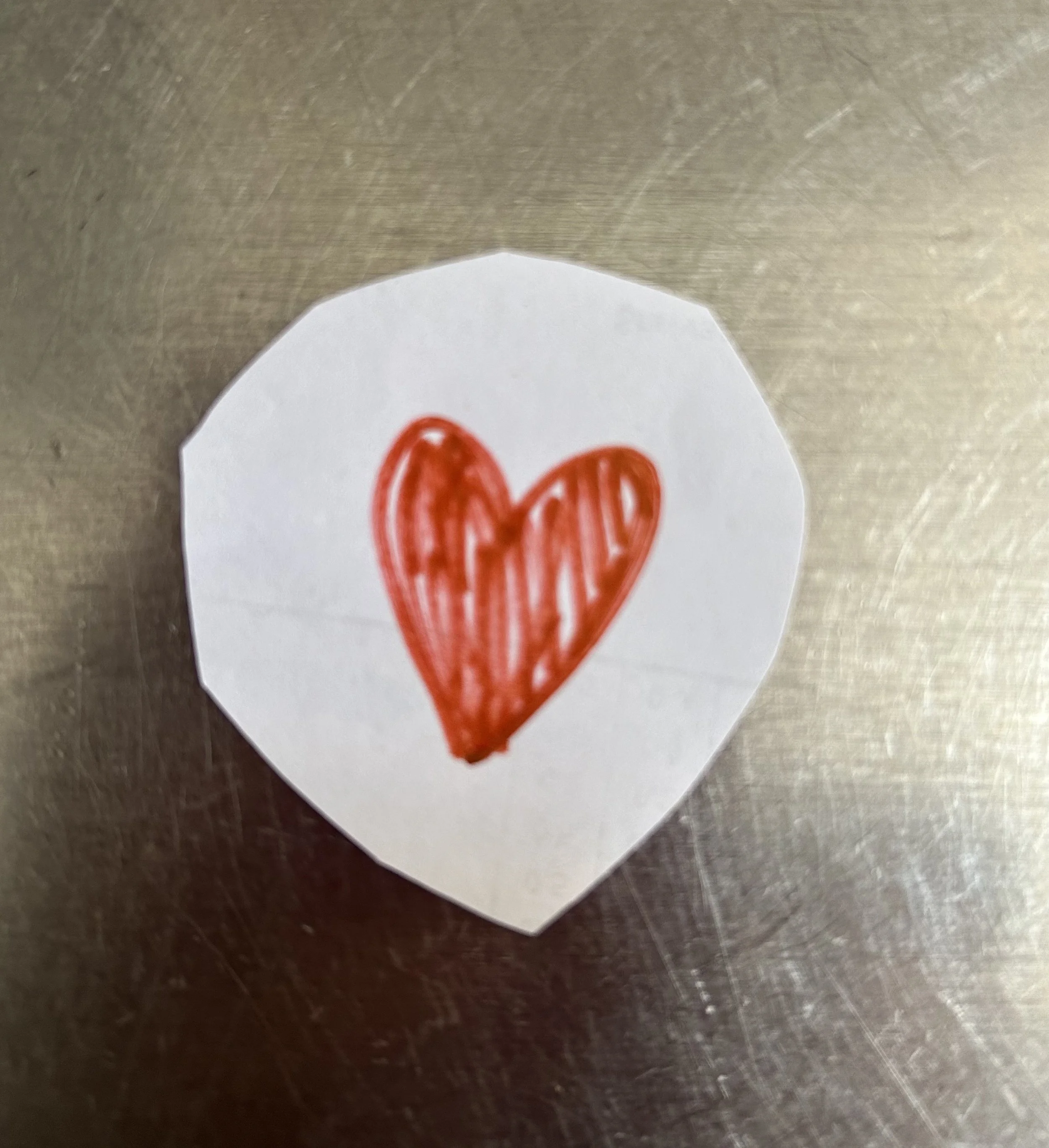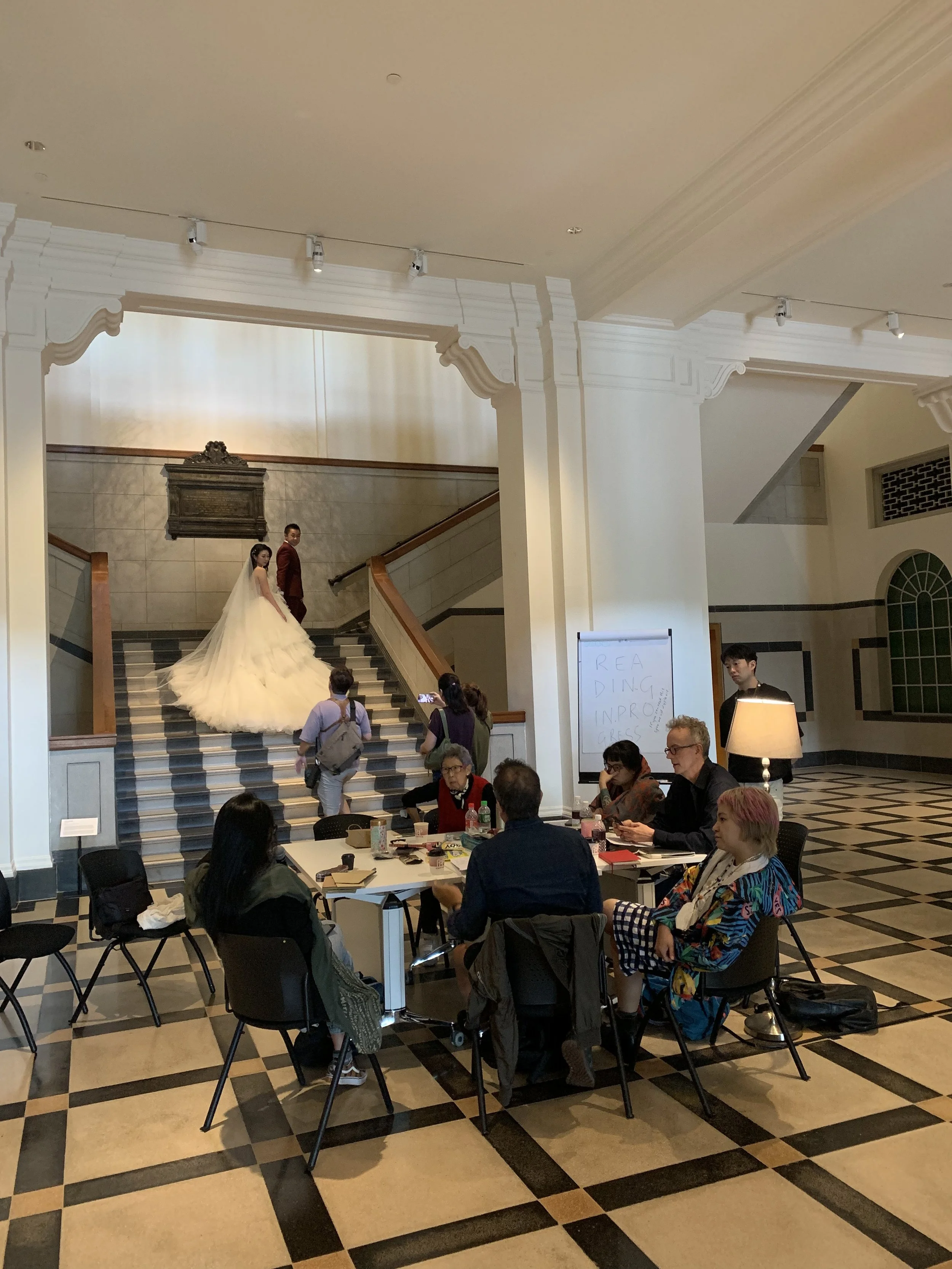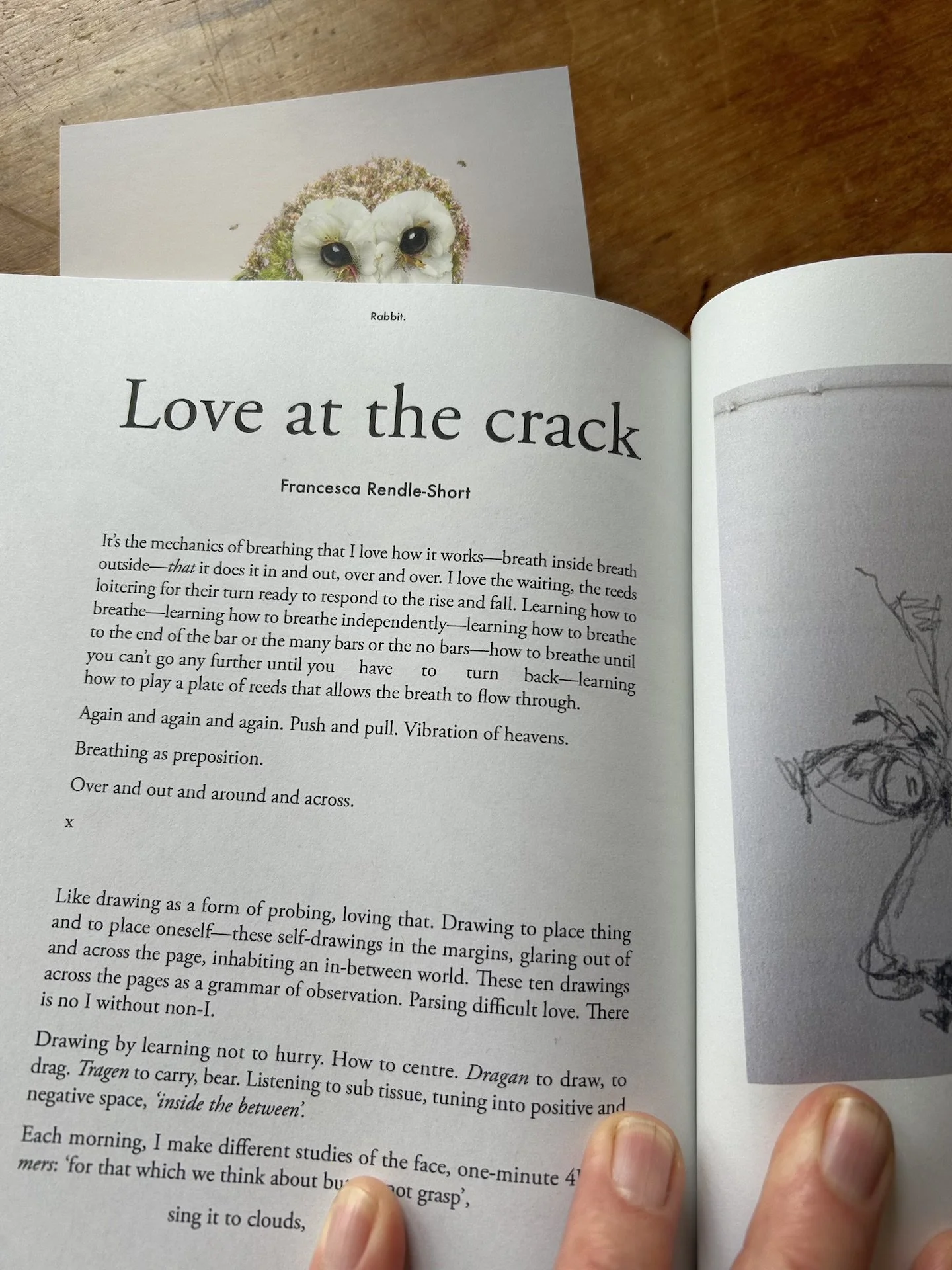-
![]()
We are making a boat, love
“We are making a boat, love” is a bookish multimodal experiment-in-the-making that works with/into/because Ania Walwicz’s Boat (1989) and as an exemplar of Eades’s écriture matière (2015). In this work we {Quinn Eades and Francesca Rendle-Short] boat build a corpus of experimental reflective and material writing that makes visible an extended and always present but often forgotten archive of creativecritical writing in this place named Australia. Following on from methods developed during their longitudinal blackout poetry project Sending Love, Eades and Rendle-Short tore out and sent (by post) a page of Boat to each writer. Writers worked with this page in any way they chose over the course of two weeks, then sent them back to return to the book, to be stitched and glued together, to make a love object, a vessel, a boat. Each writer was invited to write from/with/against these pages and these texts were cut up and rearranged into a series of paste poems that appear throughout the artists’ book. ‘We are making a boat, love’ offers a we-world (Jean Luc-Nancy), a collective, a communitas (Rendle-Short), a many voiced and irreverent conflagration.
-
![]()
Prepositioning extinction
‘Inhale and exhale of breath. Continuous and involuntary.
What keeps us kicking.
Present.
Extant.
Which brings me face-to-face with extinction. What to do. Now. How to parse it. Because. Maybe, just maybe, at this point before dying out, betwixt disappearing, there is a fresh way to think of, to dream, to hope for. ‘Bear the intimacy of scrutiny, and to flourish within it’, as Audre Lorde put it in 1977. Do some of that loose thinking again, take risks, transgress. Step out of line. Practice ‘eisetinction’. Practice love. Peel away biases, unlearn prejudices, sit with difficulty. Learn to give what you/I/we don’t have, what is missing, offering that there at the crack.’
-
![]()
With/nessing cultural exchange
Imagine that small group in the middle of the hall – they were like a source of light there – the little table – because the halls were really huge, we looked very small – that little table in the middle, right at the foot of the stairs – two stairs coming down, where the magistrates would come down, after judging and so on, or where people go up in order for their cases to be tried – and there we were, in the middle of it. No judgment whatsoever. Free expression for everybody – interesting contrast between the freedom in the CoLab and the laws that were being applied upstairs. – And the fact that it’s an international group; people who have actually experienced some sort of oppression in various degrees. I think we all did. – the Vietnamese, the Hong Kongers, the Indonesian especially, the Filipinos especially.– we have all experienced some form of colonialism and oppression by our state, and here we are performing our freedom in a hall that symbolizes all that oppression.
‘With/nessing: cultural exchange via “verbatim theatre”’ by Francesca Rendle-Short, Melody Ellis and Roanna Gonsalves will be published by AXON: Creative Explorations.
-
![]()
Love at the crack
‘It’s the mechanics of breathing that I love—how it does that—the over and over and beside the within and without. How you can’t go any further until you turn back.
Because one of its secrets is where the sound comes from, how it comes out of that breath—you’re breathing. It’s sort of miraculous.’
-
![]()
A-Z of creative writing methods
C is for communitas:
‘— Experiment acrossness with fellow writers
— Create a you-you space all-in-company
— Let go of ego and preconceived ideas — unfold yourself
— Engage in prepositional thinking with/near/around/beside/beyonding
— Do ‘love-collaboration’ as the new norm’
Q is for queering:
‘step/tread/stoop/advance/go out of line | no supposed-tos | play in the muck tarps and towels underfeet play in write in the ruins eschew necessities for-always shouldswouldscoulds | #rudeandmessy | find flow because of | un-genred un-gendered un-nameable spaces ||| make a root book’
A-Z of creative writing methods (Bloomsbury)
-
![]()
Prepositioning resistance, queerly
‘How do you preposition complicated feeling, emotional aberrancy, mother yes, but more so the m/other in us, in ourselves, an other who is the self, to nurture, to like, desire, approach those/these unspokens and untowards?
Prepositions reveal what we do not know. They are an invitation.
A queer space of grammar and syntax opens up – how to language familial relations? A body desiring love? A refusal to accept something might not be possible. Or to put it another way – a desire to transform, to be always in motion, in flux, in process, never arrived.’
‘Prepositioning resistance, queerly’ in Bending genre (Bloomsbury)





